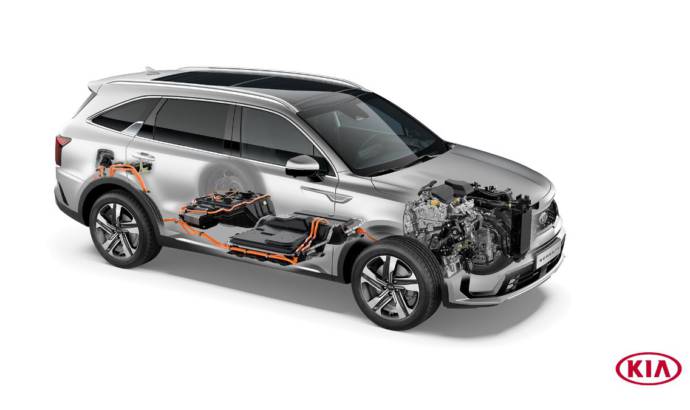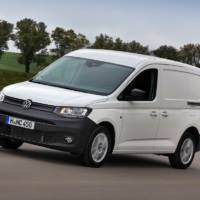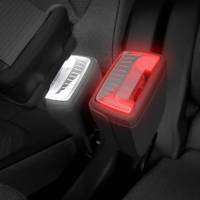With the new generation Sorento, Kia is making important steps towards hybridization. The South-Korean manufacturer unveiled the principles of its future Sorento Plug-in Hybrid. The image illustrates how the layout of its plug-in hybrid technology maximises passenger and luggage space. The Sorento will be one of the most practical plug-in hybrid SUVs on the market when European sales commence early in 2021.
Under the bonnet of the Sorento Plug-in Hybrid is a powerful 1.6-litre T-GDi (Turbocharged Gasoline Direct injection) engine, producing up to 180PS and 265Nm torque. This is supplemented by an electric motor, producing 67kW and 304Nm torque. Combined, the powertrain offers up to 265PS and 350Nm torque – making it the most powerful Sorento ever sold in Europe.
The electric motor is mounted between the engine and transmission, enabled by the neat packaging of the downsized turbocharged engine beneath the bonnet. The layout allows the Sorento Plug-in Hybrid to operate in all-electric mode, or draw on a blend of electric and combustion engine power – providing power to the front wheels or all four wheels, depending on vehicle specification and road conditions.
The car’s high-capacity 13.8kWh lithium-ion polymer battery pack is located beneath the driver and front passenger seats. The battery pack is sandwiched between the cabin floor and the Sorento’s underfloor. In the Sorento’s all-wheel drive configuration, the ‘saddle-shaped’ battery pack lays over the top of the prop shaft. This layout means the battery pack doesn’t intrude on the Sorento’s cabin or cargo space in the same way that it might in many other plug-in hybrid models, where the battery often takes up valuable boot space.
The battery pack features an independent water-cooling system for optimal heat management and efficiency. The self-contained cooling system enables the battery pack to regulate its temperature effectively in its confined location.
The Sorento PHEV’s 67-litre fuel tank is located beneath the floor underneath the second row of seats, while the 3.3kW on-board charger is situated beneath the cargo floor. The location of these components means third-row passengers still enjoy plenty of legroom and a comfortable seating position, while cargo space is still generous.
When the Sorento Plug-in Hybrid goes on sale early in 2021, it will be one of only very few seven-seat plug-in hybrid SUVs available on the market, and certainly one of the most practical. European sales are due to commence in several markets during the first quarter of 2021, and the car will be available to order in most of Kia’s global markets by the end of 2020.



